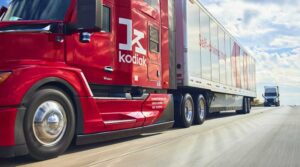If what goes up must come down, Truckload Carriers Association (TCA) members are undoubtedly hoping the aphorism applies to fuel costs rather than the increased freight rates achieved over the past two years. According to the U.S. Energy Information Administration (EIA), there’s a reasonable chance that diesel fuel costs will decline later this year. If or how far is anyone’s guess.
The EIA’s June 2022 Short-Term Energy Outlook included a forecast that U.S. refinery utilization will increase over the summer in response to strong pricing for diesel fuel and gasoline. The report points to the “crack spread” — the difference between the price of crude oil and the wholesale price of petroleum products. Wholesale prices, according to the report, have risen more than the price of the crude oil used to produce them.
Although high fuel prices are often blamed on increases in fuel demand, the war in Ukraine and sanctions against importing Russian oil and, increasingly, U.S. government policy under the Biden administration, refining capacity is not commonly mentioned, but it is a large part of fuel price increases.
The EIA estimates that refinery inputs — the crude oil, and other materials needed to refine fuels — will average 16.7 million barrels per day in the third quarter of 2022. That’s up from 15.9 million barrels in February and 16.4 million barrels in March. However, compared with the third quarter of pre-pandemic 2019, which saw an average of 17.4 million barrels per day, production in the third quarter of 2022 is predicted to be 700,000 barrels per day behind the 2019 numbers.
In 2020, according to the EIA, six refineries were recorded as permanently closed. Expanding current working refineries or building new ones would require massive investment by oil companies as well as navigation of a myriad of environmental regulations, all during the administration of a president who has pledged to transition away from oil to reduce its effect on climate change.
Carriers have also dealt with another rising cost that isn’t likely to be coming down soon, if ever — the cost of equipment. New ADAS-equipped trucks that meet current emissions standards are already more expensive. Reduced production by the manufacturers, mostly because of supply chain constraints, coupled with huge demand has taken away incentives to deal, and some OEMs are adding surcharges to their prices to cover the increased costs for materials. It’s going to get worse.
One reason is the cost of labor, which is rising.
“Right now, there’s something like two jobs looking for every available laborer,” said ACT Research President and Senior Analyst Kenny Vieth. “Labor market constraints are going to limit employee availability, which is going to create very low unemployment and should continue to generate wage inflation.”
A June 6 podcast featuring FTR Vice President of Trucking Avery Vise offered an accompanying graph showing that total hires in May reached about 6.5 million, while total job openings were around 11.5 million.
“The number of unfilled positions in April saw its largest month-over-month drop since August of 2020, but that point does not really convey the level of labor stress that remains,” Vise commented.
A report issued by the U.S. Bureau of Labor Statistics showed average weekly earnings for non-supervisory employees in May were 5.8% higher than in May 2021. As inflation remains at levels not seen in 40 years, labor costs are likely to keep pace.
Truck manufacturers, like everyone else, will pay more for labor and will pay more for parts and components as vendors pass on their increased labor costs.
The coming round of emissions regulations will push new truck prices even higher. Right now, California and a few other states have adopted the CARB requirement for a further 75% reduction in nitrous oxide (NOx) emissions from diesel engines, increasing to a 90% reduction in 2027. The EPA has announced its intention to adopt CARB standards, or something similar, nationally.
“We don’t have an EPA regulation yet, but the expectation is the EPA regulation will largely follow the California regulation,” explained Vieth. “The CARB regulation calls for a reduction in oxides, and an extension in emissions system warranties, and it’s those warranty extensions more than the technology that are really likely to drive the price,” he added.
Interest rates are rising, too. For carriers that finance equipment, and that’s nearly all of them, the added interest expense adds to total equipment cost. It also adds to overall operations cost, since many carriers depend on revolving lines of credit to finance day to day operations.
What isn’t going up any longer is freight rates — except in the flatbed sector. As reported by Truckstop.com and FTR, dry van spot rates have fallen an average of 58 cents per mile since reaching record levels at the end of 2021. Refrigerated rates have fared worse, declining by $1.17 per mile from levels at the close of 2021, which were a record for that segment.
Flatbed spot rates were setting new records of their own as June unfolded and were about 10% higher than the corresponding week in 2021.
Many TCA members haul under contracted freight rates, depending on spot rates for some backhauls and broker loads when a contract load isn’t available. Typically, spot rates respond much more quickly to market pressures, with contract rates generally following months behind. The trend, however, is clear: Rates are moving downward.
Cass Information Systems Monthly Index, which reports metrics in multiple modes of shipping, reported that inferred rates, derived by dividing its Expenditures Index by its Shipments Index, had declined 9.8% in May over April numbers. The Cass report said this about the rates, “The 15% year over year decline in rates, excluding fuel surcharges, in the more real-time spot markets in early-June portends a downcycle on the horizon.”
Anyone who has been in trucking for long understands the cyclical nature of the business. The “up” cycle enjoyed by the industry through late 2020 and all of 2021 was bound to peak before starting a downward cycle. Fortunately for the industry, what goes down must, sooner or later, go up again.
Cliff Abbott is an experienced commercial vehicle driver and owner-operator who still holds a CDL in his home state of Alabama. In nearly 40 years in trucking, he’s been an instructor and trainer and has managed safety and recruiting operations for several carriers. Having never lost his love of the road, Cliff has written a book and hundreds of songs and has been writing for The Trucker for more than a decade.















